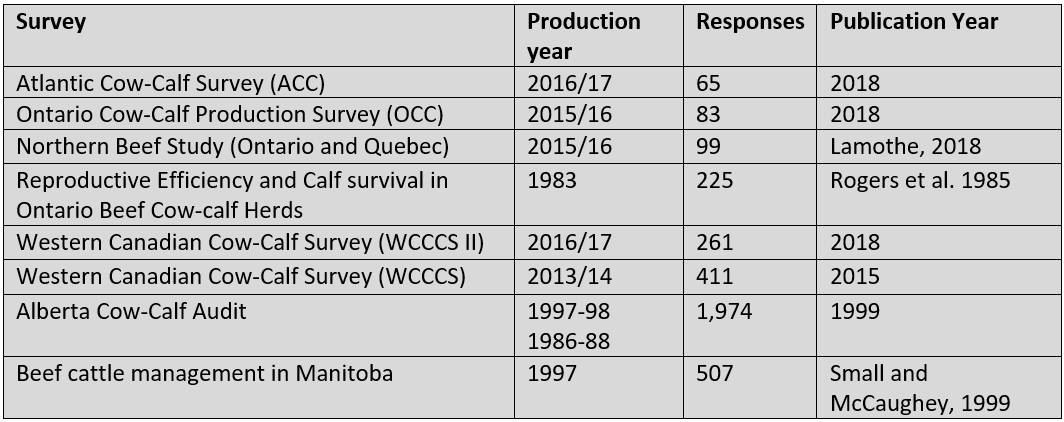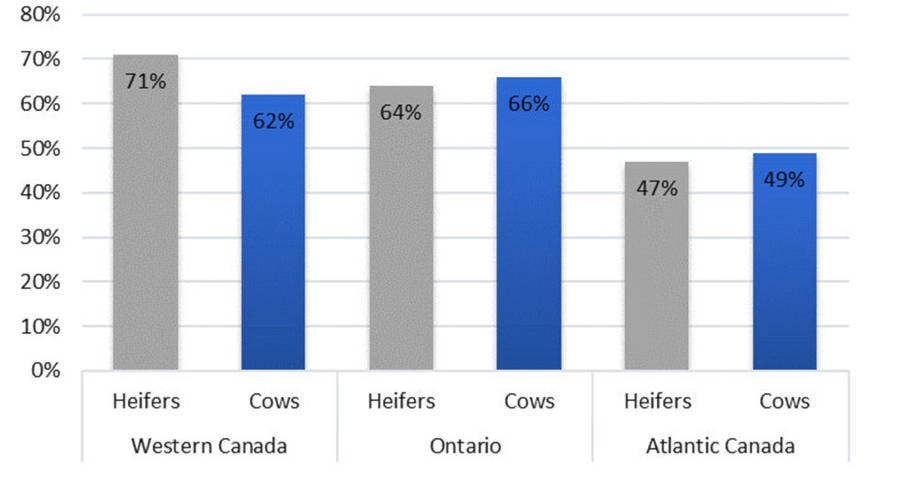Courtesy of the Beef Cattle Research Council
Industry data provided by production surveys can serve as a benchmark for production performance across the country.
Historical production surveys include the Alberta Cow-Calf Audit (1986-88, 1997-1998) and “Reproductive Efficiency and Calf survival in Ontario Beef Cow-calf Herds” (1983).
Sixteen years later, the survey was revived, revised and expanded into the Western Canadian Cow-Calf Survey (WCCCS, 2014).
In the last two production years, additional surveys have occurred across Canada (Western Canada, Ontario, Northern Quebec, Atlantic). These have provided an overall picture of current production and management practices on beef cow-calf operations in each region of the country for the first time. The objective of these surveys were multi-faceted.
First, to establish industry benchmarks for production indicators and management practices:
Herd productivity is closely linked to herd profitability. The break-even price for calves can be lowered by decreasing total cow herd costs or by increasing the total pounds of calves weaned. Increasing the total weight (pounds) of weaned calves can be achieved by improving herd productivity, such as:
a) INCREASING – conception rates, weaning rate, etc.
b) DECREASING – calf death loss, calving span, etc.
While it is good management to track and calculate one’s herd production performance indicators on an annual basis, it can be helpful to have benchmarks to compare to.
Benchmarks help a producer know if they are on the right track for their region and the environment they operate in. They can help a producer identify if they excel in a certain area and/or could improve in another. Benchmarks can also help to show what production and management practices other producers are following.
Second, to establish industry trends:
The longer history of cow-calf surveys in Alberta show how producer adoption for different practices has changed (or didn’t change) over time.
Regional expansion plans in the Maritimes and Northern Ontario and Quebec have spurred an interest in monitoring trends in those areas as they focus on improving profitability and growing inventories.
Third, to guide research and extension efforts
Information around death loss rates and causes can inform research efforts into specific diseases. It can also highlight areas where extension and communication about existing tools and information to producers, based on research that has already been done, could benefit cow-calf operations.
When reading the results, it should be remembered that differences between regions does not necessarily mean that producers need to jump at a new practice because environmental conditions and production systems influence whether a practice makes sense in one situation and not in another.
In addition, there were differences between how questions were asked and therefore results are not always comparable between surveys, not only between regions, but within regions historically.
See more results on the surveys at the Beef Cattle Research Council website blog.

